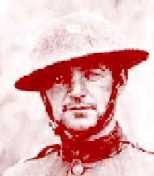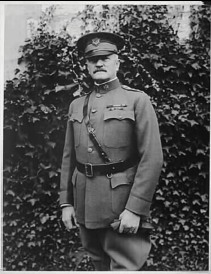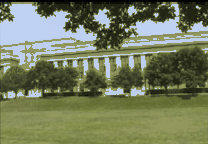

History - The American Legion
In late January, 1919, as the first World War drew near to completion, a group of officers met at Faubourg St. Honore in Paris France. All four were combat line officers (at the battalion or regimental level);
 Lt. COL. Theodore Roosevelt, Jr. (son of our 26th US President),
from the 1st Division,
Lt. COL. Theodore Roosevelt, Jr. (son of our 26th US President),
from the 1st Division,
Lt. COL. George White, general HQ of the AEF in France,

Lt. COL. William Donovan, part of New York's "Fighting 69th", and
Major Eric Fisher Wood, of the 88th Division.
With a lead role taken by Roosevelt, these four men conceived the idea of a veteran's organization, similar to the Grand Army of the Republic that had thrived after the conclusion of the Civil War. With a potential membership pool of over two million servicemen from the war, most of whom had been unfamiliar with Europe in any but the vaguest of ways, the organization would be a tremendous opportunity for fellowship as servicemen started returning home. Several names were considered, including "Liberty League", "Legion of Honor", and "American Crusaders".
 General John J. "Black Jack" Pershing - head of the AEF - was initially
opposed to the idea, but as it's popularity grew in the ranks of the officers
and enlisted men he agreed to give the subject a chance. An organizational
meeting was set at the Inter-Allied Officers' Club in Paris for the 15th
to 17th of March in 1919. This event, which came to be known
as the "Paris Caucus", is considered the official beginning of the organization.
General John J. "Black Jack" Pershing - head of the AEF - was initially
opposed to the idea, but as it's popularity grew in the ranks of the officers
and enlisted men he agreed to give the subject a chance. An organizational
meeting was set at the Inter-Allied Officers' Club in Paris for the 15th
to 17th of March in 1919. This event, which came to be known
as the "Paris Caucus", is considered the official beginning of the organization.

The Paris Caucus, consisting of approximately 1,000 officers and enlisted
men, adopted a temporary constitution, and chose The American Legion as the
name of the organization. It also elected an executive committee to complete
the work of establishing The American Legion. The executive committee named
a subcommittee to organize veterans at home in the US. A boost was given
to the Paris Caucus when President Woodrow Wilson arrived in France to participate
in the peace treaty conference at Versailles; Wilson would also give his
endorsement to The American Legion when they held their next organizational
meeting.
This second caucus was held in St. Louis, Missouri during May of 1919.
There, the American Legion constitution was completed and a temporary draft
was submitted to the membership. Included in the Legion's mission were
relief, employment, and Americanism programs.
Congress granted the Legion a national charter on September 16, 1919 and the first national convention was held in Minneapolis Nov 10th - 12th of that year. In Minneapolis The American Legion adopted a permanent constitution and elected officers to head the organization.
The charter was amended in 1942 to admit World War II veterans and again in 1950 to include veterans of the Korean War. Later it included soldiers who had served in conflicts in Lebanon/Grenada, Panama, Persian Gulf and has been open since August 2, 1990 until congress closes the dates.
The Legion's major concern has always been the veterans. It played an important role in the creation of the US Veterans Administration and the enactment of the GI Bill of Rights for World War II and Korean Veterans. Also important has been the community, youth, and Americanism.
The American Legion temporary national headquarters, set after the St Louis Caucus, was located in New York City, but delegates to the first convention chose Indianapolis over Washington DC as the permanent home for the national organization in a close (361-323) vote.
The Legion does, however, still keep an office in Washington DC, just three blocks from the White House, to support frequent visits to the seat of government by the National Commander. Also located here are offices of an executive director, and operations for Legislative, Economics, National Security, Foreign Relations, Veterans Affairs and Rehabilitation, and Media Relations.
 The American Legion's national headquarters is located at 700 N Pennsylvania
St, in Indianapolis, Indiana and is part of a development known as the Indiana
War Memorial Plaza.
The American Legion's national headquarters is located at 700 N Pennsylvania
St, in Indianapolis, Indiana and is part of a development known as the Indiana
War Memorial Plaza.